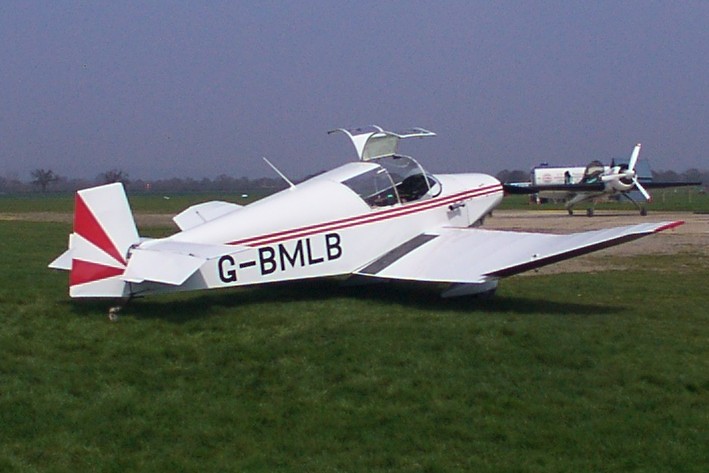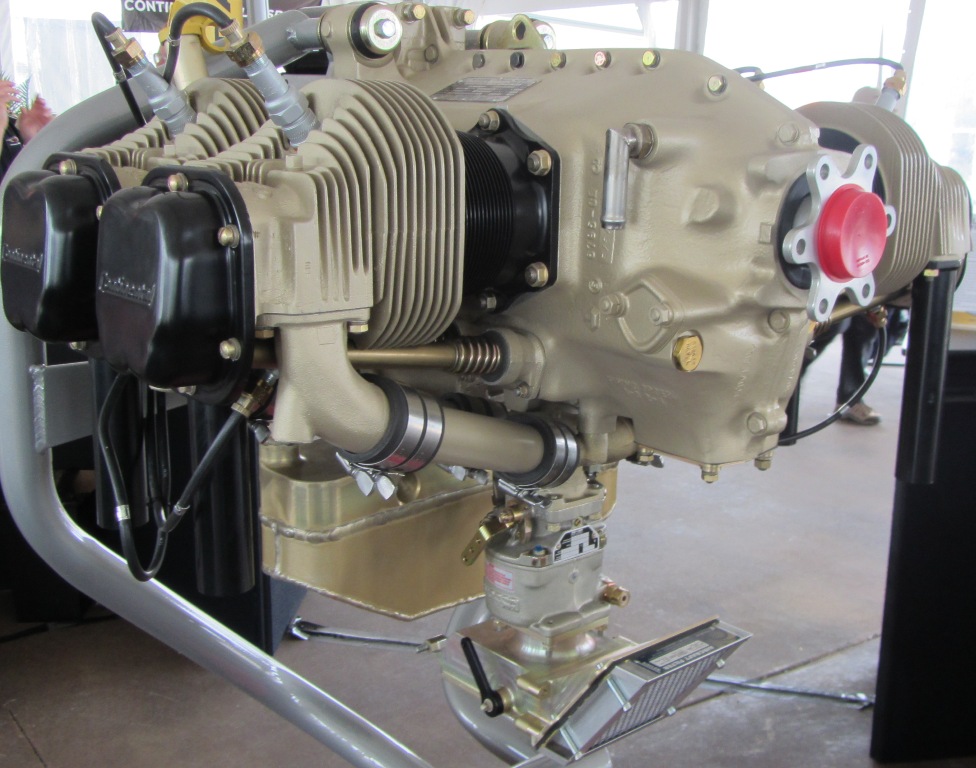|
Jodel D.120
The Jodel D.11 is a French two-seat monoplane designed and developed by Société Avions Jodel in response to a French government request for a low-wing aircraft for use by the nation's many emerging flying clubs. More than 3,000 examples have been built and flown.Tacke, Willi; Marino Boric; et al: ''World Directory of Light Aviation 2015-16'', page 99. Flying Pages Europe SARL, 2015. History Designers Édouard Joly and Jean Délémontez based the design on two of their earlier projects; they combined the wing of the projected D.10 with a lengthened and widened version of the D.9 fuselage. The first example flew on 4 April 1950. Of conventional tailwheel configuration, the D11 featured a fixed, spatted undercarriage, and accommodated pilot and passenger side-by-side. The wing panels outboard of the landing gear struts had a marked dihedral. Various powerplants were installed, typically Salmson 9, Continental O-170 or Continental O-200. The aircraft uses all-wood constr ... [...More Info...] [...Related Items...] OR: [Wikipedia] [Google] [Baidu] |
Jodel
Société Avions Jodel is a French aircraft company started in 1946 by Édouard Joly and his son-in-law Jean Délémontez. History Jodel designed a range of light aeroplanes shortly after the Second World War. The popular myth is that the two industrialists, with no formal aerodynamics training, set about designing a single-seat aircraft with some spare plywood and a small engine, a Poinsard 25hp 2-cyl. The result was the 1948 D9 Bébé (Baby) model. In fact, the two had much experience of building and designing aircraft, Delemontez being a trained aeronautical engineer, and Joly having built an aircraft before the war. The French government bought many of the aircraft, with more than 500 D9s being built during the next twenty years. Subsequently, the government expressed interest in a larger aircraft as a trainer and the two-seat D11 model followed in 1950. Jodel aircraft are all-wood, usually made from Sitka spruce and plywood made out of okoume (also known as ga ... [...More Info...] [...Related Items...] OR: [Wikipedia] [Google] [Baidu] |
Wassmer
Wassmer was a French specialized woodworking company formed by Bernard Wassmer in 1905. It later became an aircraft manufacturer specializing in gliders. It was bought out by Issoire Aviation, a subsidiary of Siren, in 1978. Aircraft production The company entered into aircraft production in 1955 when it produced under licence a batch of Jodel D.112 two-seater aircraft at its factory at Issoire. The company also produced the single-seat WA-20 and two-seat WA-30 gliders. In 1959 the company produced the WA-40 Super IV a four-seat touring aircraft. In 1972 in co-operation with Siren they formed a joint company Consortium Europeén de Réalisation et de Ventes d'Avions (CERVA) to build a metal variant of the WA4/21, itself a variant of the WA-40. The components for the Cerva CE.43 Guépard were manufactured by Siren at Argenton-sur-Creuse and final assembly, equipment fitting and flight testing was carried out by Wassmer at Issoire. The company also co-operated with the CE-75 sail ... [...More Info...] [...Related Items...] OR: [Wikipedia] [Google] [Baidu] |
Walter Mikron II
The Walter Mikron is a four-cylinder, air-cooled, inverted straight engine for aircraft. Development Developed in Czechoslovakia in the early 1930s, the engine saw limited use in late 1930s and early 1950s. In the 1980s an initial batch of engines was rebuilt by Aerotechnik Moravska Trebova for use on L-13 Vivat motorgliders. Production of new engines followed. The company Aerotechnik was later bought by Parma Technik and production resumed in 1999, under a new name, in the same factory. The engine is mostly used on ultralight, LSA and experimental aircraft. The production is about 20-30 engines annually. (2014) Variants ;Mikron I Initial production engines . 16 engines made in 1935. ;Mikron II The Mikron II, released in 1936, had a bore of and displacement of , delivering at 2,600 rpm max continuous and at 2,800 rpm for short periods. After a hiatus in production during the Second World War, production resumed till 1948, when the Micron III went into production. In total ... [...More Info...] [...Related Items...] OR: [Wikipedia] [Google] [Baidu] |
Salmson 9ADr
The Salmson 9 AD was a family of air-cooled nine cylinder radial aero-engines produced in the 1930s in France by the Société des Moteurs Salmson. Design and development The 9 AD followed Salmson practice after the First World War, of being air-cooled and utilising the Canton-Unne epicyclic geared crank-case system. The major attributes of the engine include a bore of and stroke of . Variants ;9 AD:The standard production model with LH rotation direct drive. ;9 ADb: ;9 ADr: ;British Salmson AD.9:Production of the Salmson 9AD in Great Britain by the British Salmson Company at New Malden, Surrey. ;British Salmson A.D.9R srsIII:The A.D.9 with a 0.5:1 reduction gear Applications Specifications (9 AD) See also *Salmson air-cooled aero-engines *Salmson water-cooled aero-engines *List of aircraft engines This is an alphabetical list of aircraft engines by manufacturer. 0–9 2si *2si 215 *2si 230 * 2si 430 *2si 460 *2si 500 * 2si 540 * 2si 690 3W ''Sour ... [...More Info...] [...Related Items...] OR: [Wikipedia] [Google] [Baidu] |
Mathis 4G-F-60
Mathis is a name of French origin. It is common as a surname and is also a masculine given name. People with the surname * Buster Mathis (1943–1995), American heavyweight boxer * Buster Mathis Jr. (born 1970), American heavyweight boxer *Clint Mathis (born 1976), American soccer player * Damarri Mathis (born 1999), American football player * Dawson Mathis (1940–2017), American politician * Doug Mathis (born 1983), American baseball player * Edith Mathis (born 1938), Swiss singer *Émile Mathis (1880–1956), German-French automobile pioneer *George Mathis (also G. S. Mathis), pseudonym of Mátyás Seiber (1905–1960), Hungarian-born composer *Greg Mathis (born 1960), American judge * Ida Elizabeth Brandon Mathis (1857–1925), American agricultural reformer * James C. Mathis III (born 1974), American voice actor *Jeff Mathis (born 1983), American baseball catcher * Jill Mathis (born 1964), American photographer * Johnny Mathis (born 1935), American pop singer *Kevin Mathis ... [...More Info...] [...Related Items...] OR: [Wikipedia] [Google] [Baidu] |
Continental O-200-A
The Continental C90 and O-200 are a family of air-cooled, horizontally opposed, four-cylinder, direct-drive aircraft engines of 201 in³ (3.29 L) displacement, producing between 90 and 100 horsepower (67 and 75 kW).''Federal Aviation AdministrationType certificate data sheet no. E-252'' Revision 34. (27 June 2013) Built by Continental Motors these engines are used in many light aircraft designs of the United States, including the early Piper PA-18 Super Cub,''Aircraft specification no. 1A2.'' Revision 37. (Sep. 4, 1996.) Department of Transportation. Federal Aviation Administration. the Champion 7EC,''Aircraft specification no. A-759.'' Revision 67. (Jun. 3, 2005.) Department of Transportation. Federal Aviation Administration. the Alon Aircoupe,''Type certificate date sheet no. A-787.'' Revision 33. (Jul. 14, 2005.) Department of Transportation. Federal Aviation Administration. and the Cessna 150.''Type certificate data sheet no. 3A19.'' Revision 44. (Mar. ... [...More Info...] [...Related Items...] OR: [Wikipedia] [Google] [Baidu] |
Continental C90
The Continental C90 and O-200 are a family of air-cooled, horizontally opposed, four-cylinder, direct-drive aircraft engines of 201 in³ (3.29 L) displacement, producing between 90 and 100 horsepower (67 and 75 kW).''Federal Aviation AdministrationType certificate data sheet no. E-252'' Revision 34. (27 June 2013) Built by Continental Motors these engines are used in many light aircraft designs of the United States, including the early Piper PA-18 Super Cub,''Aircraft specification no. 1A2.'' Revision 37. (Sep. 4, 1996.) Department of Transportation. Federal Aviation Administration. the Champion 7EC,''Aircraft specification no. A-759.'' Revision 67. (Jun. 3, 2005.) Department of Transportation. Federal Aviation Administration. the Alon Aircoupe,''Type certificate date sheet no. A-787.'' Revision 33. (Jul. 14, 2005.) Department of Transportation. Federal Aviation Administration. and the Cessna 150.''Type certificate data sheet no. 3A19.'' Revision 44. (Mar. ... [...More Info...] [...Related Items...] OR: [Wikipedia] [Google] [Baidu] |
Société Aéronautique Normande
Société Aéronautique Normande (SAN) was a French aircraft manufacturing business based at Bernay. It was formed in 1948 and failed in 1968. History The company was started on 1 May 1948 at Bernay-Saint-Martin by Lucien Querey. Querey was a glider pilot and aeromodeller and his idea was to run a ''Aviation Service Station'' similar to a motor-vehicle garage. His first aircraft was a conversion of a Piper Cub followed by his own two-seater design, the SAN-101. The SAN-101 did not enter production and Querey started to build the Jodel D.11 under licence. From 1952 the company built other Jodel Société Avions Jodel is a French aircraft company started in 1946 by Édouard Joly and his son-in-law Jean Délémontez. History Jodel designed a range of light aeroplanes shortly after the Second World War. The popular myth is that the ... designs under licence and these were followed by two models exclusive to SAN, the D.140 Mousquetaire four/five seater and the D.150 Masc ... [...More Info...] [...Related Items...] OR: [Wikipedia] [Google] [Baidu] |
Continental A65
The Continental O-170 engine is the collective military designation for a family of small aircraft engines, known under the company designation of A50, A65, A75 and A80. The line was designed and built by Continental Motors commencing in the 1940s. It was employed as the powerplant for civil and military light aircraft.Christy (1983) The horizontally opposed, four-cylinder engines in this family are all identical in appearance, bore, stroke, dry weight, and piston displacement. All feature a bottom-mounted updraft carburetor fuel delivery system. The higher power variants differ only in compression ratio and maximum allowable rpm, plus minor modifications. The lower power versions are fully convertible to the higher rated versions. Design and development In all models of this family of engines the cylinder heads are of aluminum alloy, screwed and shrunk onto steel barrels. Spark plug inserts and intake valve seats are made from aluminum-bronze alloy, while the exhaust valve sea ... [...More Info...] [...Related Items...] OR: [Wikipedia] [Google] [Baidu] |
Minié 4
Minié or Minie may refer to: * Claude-Étienne Minié (1804-1879), French Army officer and weapons designer ** Minié rifle, designed by Claude-Étienne Minié ** Minié ball, a rifle bullet designed by Claude-Étienne Minié * Minie Brinkhoff Wilhelmina "Minie" Brinkhoff (born 19 December 1952) is a retired Dutch cyclist who was active between 1970 and 1978. She won a bronze medal in the road race at the 1977 UCI Road World Championships as well as two national track sprint titles, in ... (born 1952), retired Dutch cyclist See also * Mini (other) * Minni (other) * Minnie (other) * {{disambig, surname ... [...More Info...] [...Related Items...] OR: [Wikipedia] [Google] [Baidu] |
2020-01-21 Freestyle Skiing – Snowboarding At The 2020 Winter Youth Olympics – Team Ski-Snowboard Cross (Martin Rulsch) 25 (cropped)
The hyphen-minus is the most commonly used type of hyphen, widely used in digital documents. It is the only character that looks like a minus sign or a dash in many character sets such as ASCII or on most keyboards, so it is also used as such. The name "hyphen-minus" derives from the original ASCII standard, where it was called "hyphen(minus)". The character is referred to as a "hyphen", a "minus sign", or a "dash" according to the context where it is being used. Description In early monospaced font typewriters and character encodings, a single key/code was almost always used for hyphen, minus, various dashes, and strikethrough, since they all have a roughly similar appearance. The current Unicode Standard specifies distinct characters for a number of different dashes, an unambiguous minus sign ("Unicode minus") at code point U+2212, and various types of hyphen including the unambiguous "Unicode hyphen" at U+2010 and the hyphen-minus at U+002D. When a hyphen is called for, the ... [...More Info...] [...Related Items...] OR: [Wikipedia] [Google] [Baidu] |


.jpg)


.jpg)